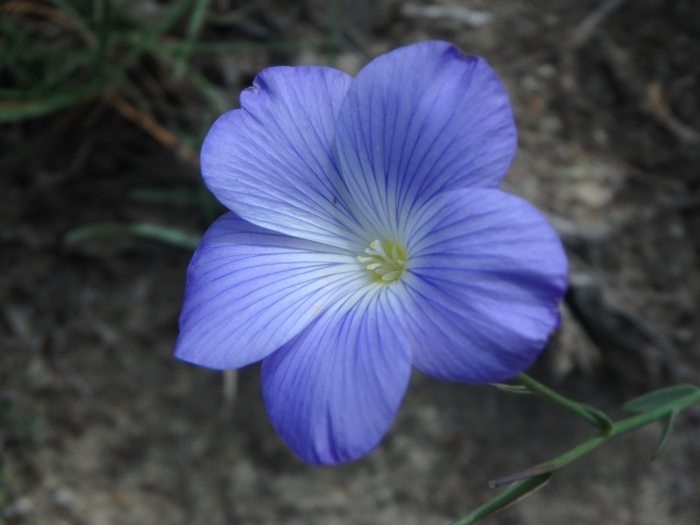Perennial Flax
(Linum narbonense)
Perennial Flax (Linum narbonense)
/
/

Daniel Cahen
CC BY 4.0
Image By:
Daniel Cahen
Recorded By:
Copyright:
CC BY 4.0
Copyright Notice:
Photo by: Daniel Cahen | License Type: CC BY 4.0 | License URL: http://creativecommons.org/licenses/by/4.0/ | Rights Holder: Daniel Cahen | Publisher: iNaturalist | Date Created: 2018-06-16T10:00:57-07:00 |


















































Estimated Native Range
Summary
Linum narbonense, commonly known as Perennial Flax, is a semi-deciduous perennial herb native to the Western Mediterranean region, including Southern France and Spain. It typically grows to a height of 1–2.5 feet and a width of 1 foot. The plant features a cyme of about ten clear blue flowers with five petals, each 2–2.5 cm in diameter, blooming in late spring to early summer. The flowers are quite showy and are complemented by small, narrow grayish-green leaves arranged in whorls on the stem. Following flowering, it produces small beige ball-like seed heads. Perennial Flax thrives in open, sunny habitats such as grasslands and scrubby areas.
Perennial Flax is valued for its delicate blue flowers and ease of maintenance. It is often used in rock gardens, borders, and as a bedding plant. It can also be used for naturalizing areas and attracting pollinators. The plant prefers full sun exposure and requires medium amounts of water, thriving in well-drained soils. It is generally pest-free but can be susceptible to rust if grown in overly moist conditions. To propagate, seeds should be started indoors 6–8 weeks before the last frost or sown directly outdoors in early spring once the soil is workable. Germination takes 14–30 days. It is important to note that while Perennial Flax is not typically invasive, it can self-seed under ideal conditions.CC BY-SA 4.0
Perennial Flax is valued for its delicate blue flowers and ease of maintenance. It is often used in rock gardens, borders, and as a bedding plant. It can also be used for naturalizing areas and attracting pollinators. The plant prefers full sun exposure and requires medium amounts of water, thriving in well-drained soils. It is generally pest-free but can be susceptible to rust if grown in overly moist conditions. To propagate, seeds should be started indoors 6–8 weeks before the last frost or sown directly outdoors in early spring once the soil is workable. Germination takes 14–30 days. It is important to note that while Perennial Flax is not typically invasive, it can self-seed under ideal conditions.CC BY-SA 4.0
Plant Description
- Plant Type: Herb
- Height: 1-1.5 feet
- Width: 1-1.5 feet
- Growth Rate: Moderate
- Flower Color: Blue, Purple
- Flowering Season: Spring, Summer
- Leaf Retention: Semi-Deciduous
Growth Requirements
- Sun: Full Sun
- Water: Medium
- Drainage: Fast, Medium
Common Uses
Bee Garden, Bird Garden, Butterfly Garden, Deer Resistant, Drought Tolerant, Low Maintenance, Rabbit Resistant, Rock Garden, Showy Flowers
Natural Habitat
Mediterranean climates
Other Names
Common Names: Blue Flax, Flax, Südfranzösischer Lein, Narbonner Lein, Lin De Narbonne, Blålin
Scientific Names: , Linum narbonense,
GBIF Accepted Name: Linum narbonense L.